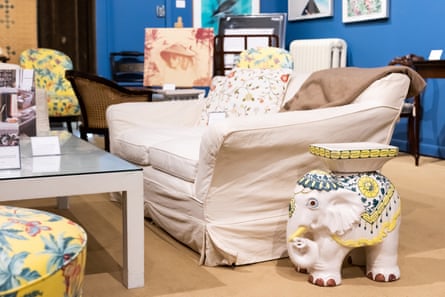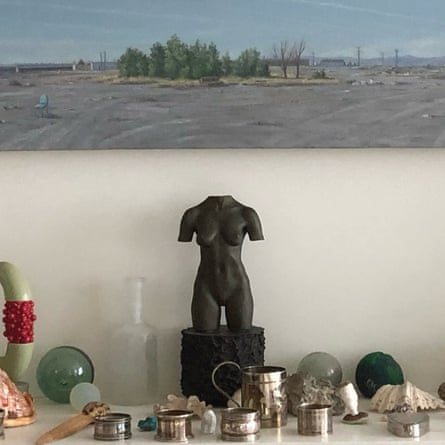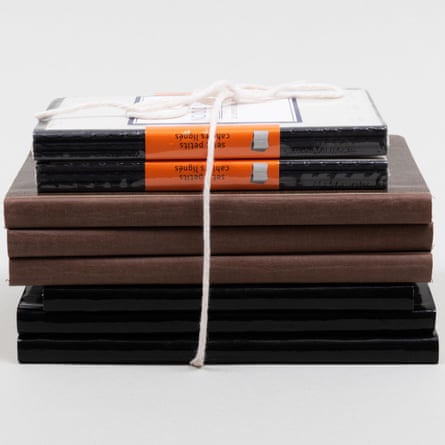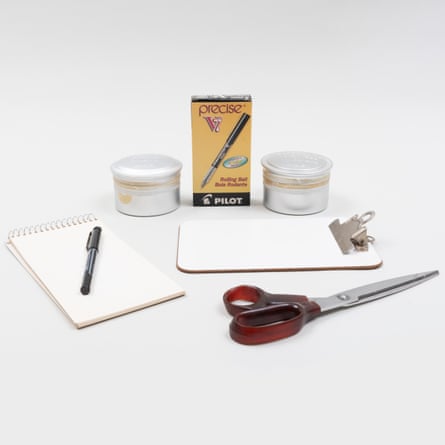Everybody wants to be Joan Didion. Even those brave few who play the dinner party game “Joan or Jones?” and self-identify as team Bridget secretly want to be Joan Didion.
Until her death last year at age 87, Didion was never not a role model, especially to a cohort of young female writers who tried, and still try, to replicate her detached, cool-eyed prose and proto-Olsen sister style. The photographs of Didion that grace tote bags and anchored fashion campaigns showed a wraithlike figure swimming in monochromatic garments, her accessories of choice a can of Coke or a cigarette. Here was living proof that the life of the mind could be unfailingly glamorous, that it was possible to straddle California cool and New York sophistication.
But there was another side to Didion, a cozier one that only comes into focus now, thanks to the author’s estate sale taking place next week at Stair Gallery in Hudson, New York. The collection, available for online perusal, shows a woman who was more than happy to be at home – and wasn’t too cool for a “Maybe Broccoli Doesn’t Like You Either” novelty apron.
Didion resisted self-exposure, even in her semi-autobiographical journalism. “At no point have I ever been able successfully to keep a diary,” she wrote in her essay On Keeping A Notebook. “On those few occasions when I have tried dutifully to record a day’s events, boredom has so overcome me that the results are mysterious at best.” The estate sale’s 244 lots – a mix of art, furniture, books and knick-knacks – work together to pull back the shroud of mystery. “I read Joan Didion in college and I knew her public persona,” says Lisa Thomas, director of Stair’s fine arts department and the show’s primary organizer. “I had an impression of her as being sort of removed and aloof – very cerebral and literary.” Speaking extensively with Didion’s friends and family in the process of pulling together the collection has dislodged her pre-existing assumptions. “She was so warm and generous and open with her time and compliments about people’s work, and supportive of people and friends going through difficult times.”
After reviewing all of the items in the Upper East Side apartment Didion shared with her husband and occasional co-writer John Gregory Dunne, Thomas and her team settled on the show’s fewer than 300 lots. “We chose the items from her apartment that we felt best represented the story that we and her family wanted to tell about her,” Thomas said. “The thing I think was interesting about Joan Didion’s space is that it was very comfortable. It was very light and bright with floral upholstery and bright colors. It had that sort of California shimmer to it.”

To that end, the sale contains the seashells that were scattered on the living room mantel, stacks of cookbooks (many of them Creole, along with some Ottolenghi) and an assortment of seven pillows that look like goods purchased at a women’s exchange. “To see these sort of sweet personal objects tugs at the heartstrings,” Thomas says.
In addition to the many pieces of dark wood furniture that Thomas believes Didion and Dunne accepted as hand-me-downs from family members, there is a pair of floppy white slip-covered sofas. “That just doesn’t scream ‘Joan Didion’ at all,” Thomas says of the duo, which comes with needlepoint pillows and a club chair. “But those were right in the center of her living room and speak to this totally comfortable environment that she created.” Precious and fancy weren’t part of the Didion picture.

The old school Didion scholars will be comforted to review her art collection. She favored cool-to-the-touch 20th-century American abstracts, with works by Ed Ruscha, Bruce Nauman and Vija Celmins. “[The art] really has a point of view and is mostly by California artists, many of whom she knew and was friendly with,” says Thomas. Didion’s friend Earl McGrath, who ran a record label before opening an art gallery in Los Angeles, sold Didion and Dunne many of their pieces.
Estimated to be worth up to $70,000, a geometric print by the abstract expressionist Richard Diebenkorn is the most valuable object for sale, but the highest bid is presently around one-third that much. Early bids tell another story about what is worth the most to Didion’s fans. An assortment of blank notebooks, not unlike versions one could find for sale at any stationery shop (save for the Joan Didion nameplates), have been a big draw. Valued between $100-200, the current bid is $2,200.

Thomas brings up another lot, a pair of red and blue glass bells that sat on Didion’s counter by a window facing a church tower. It’s a window that will be familiar to readers of her elegiac books on losing Dunne, and also their daughter, Quintana, who died in 2005 at age 39.
“Looking out that window towards the church was part of her grieving process, so she would have been looking through the colored glass out the window,” says Thomas. These delicate objects, along with the chunky Celine sunglasses on sale, enable anyone to see the world through Didion’s eyes – for the right price.

